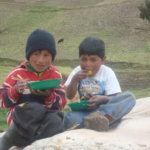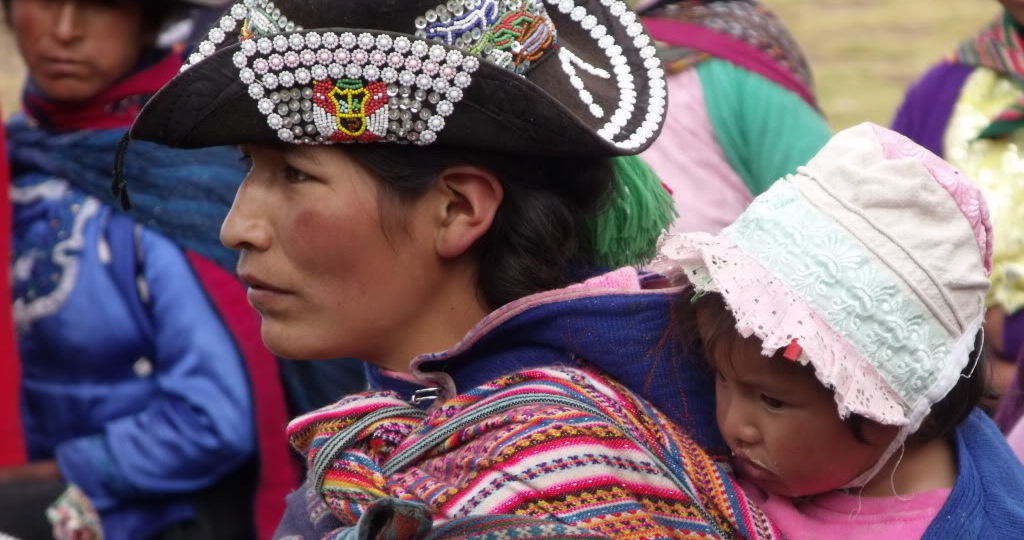


Grupo Yanapai
CIP, Instituto de Investigación Nutricional (IIN), FUNDAPA, JSP, Prosuco
Bolivia Peru
8/2014—8/2018
The department of Huancavelica in Peru has one of the highest rates of child malnutrition in South America. One of every two children under five suffers from chronic malnutrition; anemia in children between the ages of 6 to 36 months was over 70% in 2011. Huancavelica’s high-altitude production system is characterized by a mixed farming system, with both crops and livestock grown primarily for subsistence. Potatoes and barley are the main food crops, complemented by fava beans, peas, and other tubers. Families manage small flocks of sheep, llamas and a few cattle, with animal production limited by the scarcity of fodder. Non-farm activities, such as the sale of crafts in local fairs, are becoming increasingly important. Young men migrate to urban centers on a temporary basis. The farming system is highly vulnerable to increasingly frequent extreme climatic events, such as heavy rains, dry spells, frost and hailstorms. Pests and diseases have also increased in recent years. All of these factors have had negative impacts on farm productivity and it is increasingly difficult for families to meet their food needs.The non-governmental organization Yanapai has been working with the CCRP since 2003, first on agricultural biodiversity and soil fertility. Since 2008, as they realized that attention to the linkages between agricultural diversity and nutritional diversity was crucial to improving child nutrition, the team incorporated a nutrition focus. They have had success in both improving resilience and in diversifying the production and consumption of nutritious foods such as biofortified potatoes, green leafy vegetables, fava beans, and eggs. Intensive nutrition training has led to improved child feeding practices.Having had local success over several years, the project will transition out of the Choppca communities, taking what they have learned to the Ambato district of Huancavelica, where theteam will initiate work with five communities and 800 families. Yanapai will continue to contribute to the understanding of the principles that govern agriculture-for-nutrition interventions. Its goal will be improving agrobiodiversity as a means to improve nutrition. It will also aim to ascertain how feasible it is for families to change their consumption habits so as to adopt a healthy and balanced diet, which in turn improves child nutrition.
A baseline 24 hour recall nutrition survey was conducted with the universe of mothers with children under 2 in the Ambato communities in Peru (n=141) during the time of scarcity and abundance. Results show that there is exclusive breastfeeding for the first 6 months, although 8% of mothers started complementary feeding early during times of abundance. Children meet 84% of their energy needs in times of scarcity and 66% in times of abundance with the exception of the 12% of children who participate in a state run nutrition program have more than double the energy intake and triple the iron intake than those who don’t, although they are still deficient in iron (58%) and calcium (48%). 80-90% of the non-participating families have iron and zinc deficiencies, which is seen as the main nutritional problem, along with calcium deficiencies. More than 70% of children under 2 based on this understanding of the problem the project will promote the consumption of foods of animal origin beginning at 6 months of age.A baseline survey on forage and animals in two project communities in Peru (n=108) shows that over 80% of families own sheep (an average 45) with very few having other kinds of animals. In one community (Castilapata) an average of 16% of those surveyed plant pasture grass on 200 m2 extensions and in the other (Paltamachay)55% do on 100 m2 extensions. Thus there is definitely a need to work with animals and pastures but there is also a lot of heterogeneity that will have to be addressed when developing options by contexts.
